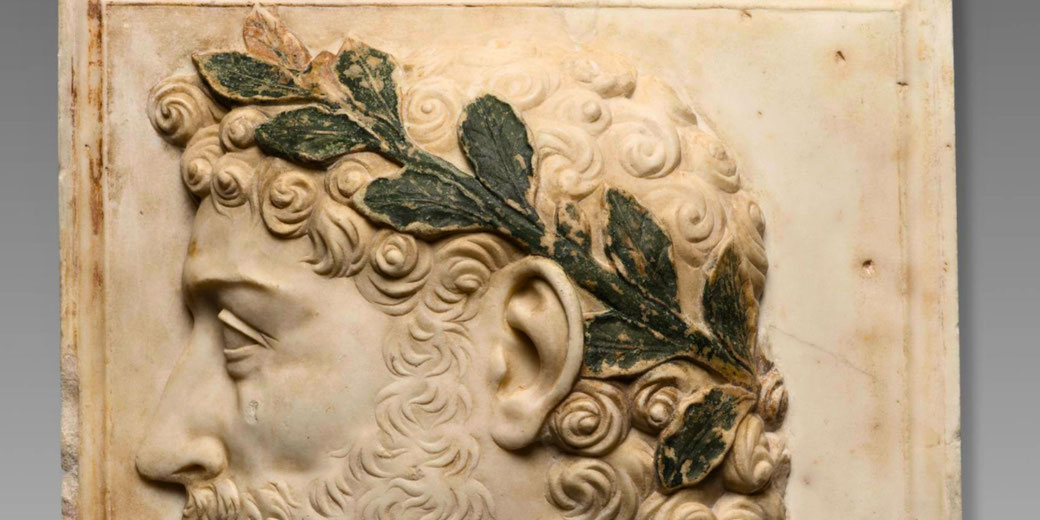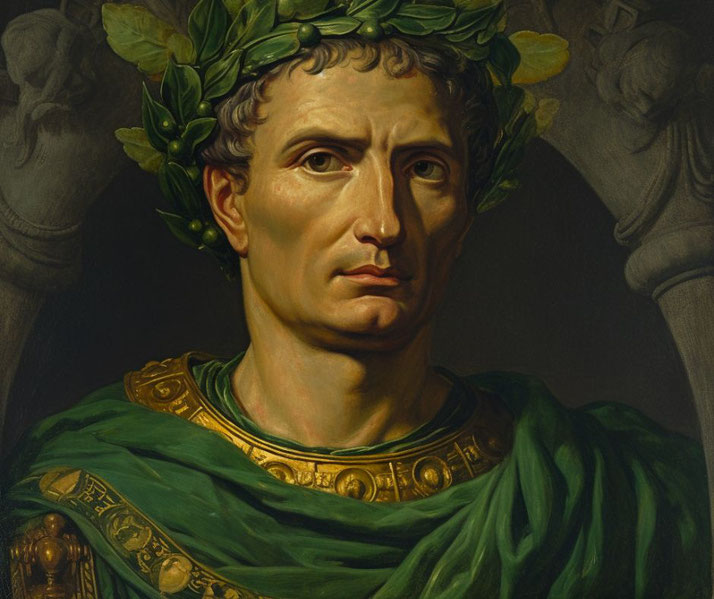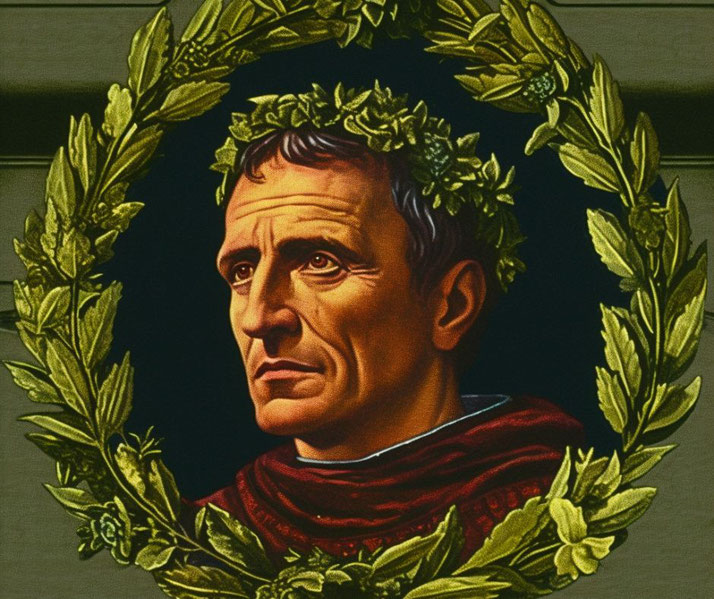Why were Roman soldiers given crowns?

The Roman Empire, one of the most formidable and extensive civilizations in human history, is renowned for its many contributions to the modern world.
Among these is a military system known for its rigorous discipline, exceptional strategy, and notable valor. Integral to this system was a robust recognition and rewards protocol that reinforced bravery, dedication, and service to the Empire.
One of the most captivating aspects of this protocol was the bestowal of crowns upon deserving soldiers - a tradition deeply entrenched in the fabric of Roman military history.
Crowning a soldier was not merely a ceremonial act; it carried significant symbolism and impact. Crowns were prestigious awards, conferred to soldiers who had distinguished themselves in service through acts of heroism, exceptional leadership, or notable triumphs on the battlefield.
Different types of crowns represented various achievements, with the Corona Civica, Mural Crown, Naval Crown, and Grass Crown among the most coveted.
These crowns were more than mere decorative pieces; they were emblems of honor, glory, and commitment to the Empire, often enhancing the recipient's social standing and military career.
Understanding Roman military culture
In the heart of Rome, military service was more than a civic duty; it was a rite of passage for men of eligible age, shaping the societal structure and values of the time.
The Roman military was an intricate organization that encompassed a range of roles from foot soldiers to cavalrymen, archers to engineers, and commanders to generals.
Soldiers, irrespective of their position, played a crucial role in expanding the Roman territories, maintaining peace within the vast Empire, and upholding Roman honor against external threats.
Their courage, dedication, and loyalty to Rome were highly valued and regarded as quintessential Roman virtues.
Symbolism was a fundamental aspect of Roman culture and was prolifically incorporated into various facets of life.
The Romans believed that symbols had the power to communicate ideas, beliefs, and values more effectively than words, and this belief permeated their military practices as well.
Military symbols ranged from the well-known Roman standards, like the Aquila (Eagle) carried by legions, to personal decorations awarded to soldiers, such as torcs, phalerae, and the much-coveted crowns.
These symbols were not just tokens of recognition; they embodied Roman ideals of courage, honor, and loyalty.
The tradition of awarding crowns to soldiers has its roots deeply embedded in this rich historical context.
These crowns were tangible symbols that encapsulated the valor and triumphs of soldiers, recognized their service, and elevated their status within society.
They were not only individual honors but also a testament to the Roman ethos of recognizing and commemorating outstanding military service.

What crowns could a soldier earn?
1. Civic Crown
First among them was the Civic Crown or Corona Civica. Made of oak leaves, it was one of the highest military honors and was granted to soldiers who saved the life of a fellow Roman citizen in battle.
The award symbolized an act of valor that directly resulted in the preservation of a Roman life, reflecting the high societal value placed on citizenship.
The criteria here were quite explicit: the lifesaving act had to occur in combat, and the saved individual had to be a citizen of Rome.
This crown celebrated the act of preserving the life of a fellow citizen - an act that resonated deeply with the societal value Romans placed on citizenship.
2. Mural Crown
Another prestigious award was the Mural Crown or Corona Muralis, made of gold and adorned with turrets.
This crown was awarded to the first soldier who successfully scaled the wall of a besieged city or fortress and survived.
It symbolized the bravery and strategic prowess necessary for such an accomplishment, elevating the recipient's status within the military ranks.
The recipient had to be the very first to achieve this feat, making this award quite exclusive.
It rewarded the strategic skills and bravery required to breach enemy fortifications, often a pivotal moment in a siege.
3. Naval Crown
The Naval Crown, or Corona Navalis, was another significant military honor. Made of gold and decorated with miniature prows of ships, it was awarded to the first man to board an enemy ship during a naval engagement.
This crown underscored the importance of naval warfare in expanding and protecting the Roman Empire.
Naval warfare was a vital aspect of Rome's military strategy, and this crown recognized the courage and tactical acumen required in maritime combat.
4. Grass Crown
Perhaps the most prestigious of them all was the Grass Crown or Corona Obsidionalis.
Made from grasses, flowers, and grains, this crown was awarded to a general who lifted a siege and saved a beleaguered Roman army.
The award was rare, as it required an exceptional feat of strategy and leadership, often in dire circumstances.
This was perhaps the most prestigious of all the military crowns, as it was not merely a recognition of bravery, but also a testament to exceptional leadership and strategic command in the most dire of circumstances.

Why were these crowns so important to Romans?
While the physical crowns bestowed upon Roman soldiers were certainly symbols of distinction, their true significance lies much deeper than their outward appeal.
These crowns held immense societal, career-oriented, and even spiritual value for the recipients and the Roman society at large.
From a societal perspective, the crowns were a visible sign of a soldier's valor and commitment to the Empire.
They signified acts of heroism, strategic victories, and exceptional service that resonated with the Roman ethos of bravery, loyalty, and honor.
The crowns bestowed honor and prestige upon the recipients, often enhancing their societal standing.
They were seen as embodiments of the quintessential Roman virtues, instilling admiration and respect in the hearts of fellow citizens.
In terms of career progression within the Roman military, a crown could significantly enhance a soldier's prospects.
For instance, a soldier who had been awarded a Civic Crown or a Mural Crown was often seen as a potential candidate for promotion.
Generals who received the Grass Crown could see their careers catapulted to new heights, with increased command responsibilities and greater influence within the military hierarchy.
In this way, the crowns not only recognized past feats but also shaped the future career trajectories of the recipients.
The spiritual dimension of the crowns cannot be overlooked either. The Romans believed in the favor of the gods in their endeavors, and military victories were often seen as signs of this divine favor.
Crowns, especially the Corona Civica made of sacred oak leaves, were believed to confer a spiritual connection and protection from the gods.
This added an extra layer of significance to these awards, connecting the earthly valor of the soldiers with the divine realm.
Some very famous recipients of these crowns
Throughout the expansive history of the Roman Empire, numerous soldiers and generals were bestowed with the esteemed honor of crowns.
These individuals, through their feats of heroism, strategy, and service, left indelible marks on Roman history.
Perhaps one of the most famous recipients of the Corona Civica, or Civic Crown, was Marcus Licinius Crassus, a Roman general and politician who was awarded the crown during the First Servile War.
Crassus earned the honor for saving the life of a fellow soldier in battle, a deed that symbolized his bravery and commitment to his comrades.
Crassus later became one of the wealthiest men in Rome, and his military and political influence played a significant role in the transformation of the Roman Republic into the Roman Empire.

Another prominent figure in Roman history, Julius Caesar, was a recipient of the Corona Civica.
Caesar was awarded the crown for saving the life of a fellow citizen during a siege.
This act not only earned him the prestigious crown but also established his reputation as a courageous leader, setting the stage for his illustrious career as a general and a statesman.
The Corona Muralis was awarded to soldiers who displayed exceptional courage during sieges.
One of the notable recipients was Scipio Aemilianus, who was honored with the Mural Crown for his role in the Siege of Carthage during the Third Punic War.
His strategic acumen and bravery made him a revered figure in Roman military history.
As for the Corona Obsidionalis or Grass Crown, it was so rarely awarded that it became synonymous with legendary feats of leadership.
One such recipient was Quintus Fabius Maximus, who was awarded the Grass Crown for his leadership during the Second Punic War.
Fabius Maximus successfully employed a strategy of attrition against Hannibal's forces, which saved Rome during a critical period of the war.
The important ceremony when giving a crown
The process of bestowing crowns in Ancient Rome was not a simple affair. The ceremony surrounding the awarding of these honors was a significant event, replete with symbolism and solemnity, reflecting the importance these awards held within Roman society.
The ceremony typically took place within a military camp or a battlefield after a victory.
The presentation of the crowns was often carried out by the highest-ranking officer present, such as a consul or a general, further emphasizing the prestige associated with these awards.
Soldiers and officers would gather to witness the ceremony, reinforcing the collective pride and unity within the Roman ranks.
The recipient would be called forward, and the feats or deeds that earned them the crown would be recounted aloud, allowing those present to fully appreciate the gravity of the soldier's achievement.
This public recitation underscored the connection between the individual's valor and the collective strength of the Roman military.
The crown would then be placed on the soldier's head, a physical mark of honor that was then visible to all.
The act of crowning in itself was imbued with deep symbolism, representing not just the recognition of the soldier's feats, but also their acceptance into a distinguished group of individuals who had demonstrated extraordinary courage and service.
The ceremony would often be accompanied by cheers and applause from fellow soldiers, reflecting the camaraderie and mutual respect within the ranks.
Sometimes, the ceremony also involved sacrifices to the gods, reinforcing the spiritual significance associated with the crowns and symbolizing gratitude for the victory.
These ceremonies were not mere formality. They played a crucial role in maintaining morale, fostering unity, and promoting the culture of honor and valor within the Roman military.
The pomp and solemnity of these ceremonies, coupled with the prestige of the crowns, made the occasion a memorable event, deeply impacting the recipient and those who witnessed it.
They were moments of shared pride and collective celebration, weaving together the threads of individual heroism, societal recognition, and spiritual connection into a profound symbol of Roman military tradition.
What do you need help with?
Download ready-to-use digital learning resources
Copyright © History Skills 2014-2025.
Contact via email
With the exception of links to external sites, some historical sources and extracts from specific publications, all content on this website is copyrighted by History Skills. This content may not be copied, republished or redistributed without written permission from the website creator. Please use the Contact page to obtain relevant permission.





